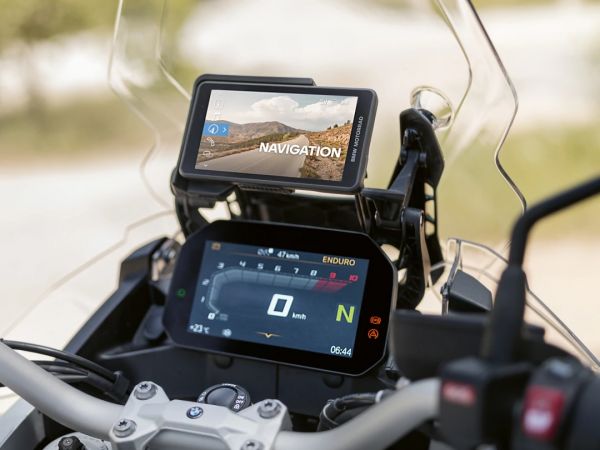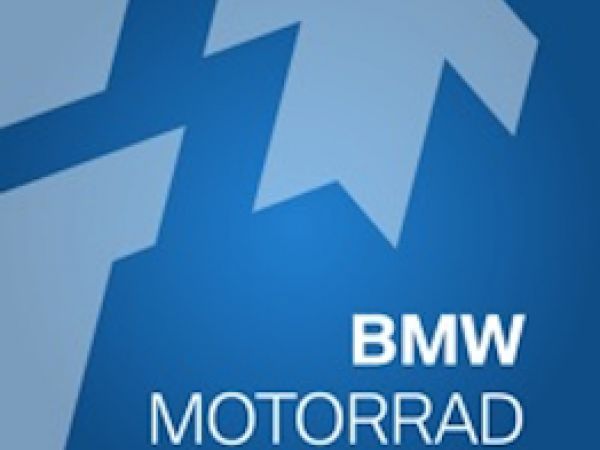The International Driving Permit
The International Driving Permit
Category: Motorcycle Tours | Precautions | Travel Recommendations | Traffic regulations in Europe
Understanding the International Driving Permit:
A Key to Smooth Overseas Riding for Motorcyclists.
When planning an international motorcycle adventure, e.g. a guided motorcycle tour, one of the most important documents you need to secure is an International Driving Permit (IDP). This document is critical for ensuring that your experience on foreign roads is free of hassle. In this article, we will take a comprehensive look at how an IDP can smoothen your guided motorcycle adventure overseas.
What is an International Driving Permit?
The International Driving Permit (IDP) is a document that allows you to drive or ride motorcycles in foreign countries without the need for additional tests or permits. Recognized by over 150 countries worldwide, an IDP translates your existing driver's license into multiple languages, ensuring that local authorities can easily understand your driving credentials. It serves as proof that you hold a valid driver's license in your home country and are legally permitted to operate a motorcycle. A real motorcycle!
International Driver's License vs. International Driving Permit:
Understanding the Difference.
There is often confusion between an International Driver's License and an International Driving Permit, but it is important to understand the difference. An International Driving Permit is an internationally recognized document that does not replace your national driver's license but works alongside it to facilitate driving and riding in other countries. On the other hand, an International Driver's License is an unofficial document that does not have any legal standing and is not recognized by authorities. Therefore, motorcyclists planning to ride abroad should always opt for an IDP rather than an International Driver's License.
International Driving Permit Requirements:
What You Need to Know.
Acquiring an International Driving Permit is relatively simple if you adhere to the necessary requirements. Here are the steps you need to follow:
Eligibility: You must hold a valid driver’s license from your home country. Most countries require you to be at least 18 years old to apply for an IDP.
Application: Apply for an IDP through your country's automobile association or motor vehicle authority. This can often be done online, by mail, or in person. Another good option is using the online platform of the International Drivers Association. Ensure you apply well in advance of your travel date.
Required Documents: You will need to submit a completed application form, a copy of your current driver's license, two passport-sized photos, and the appropriate fee.
Processing Time: Processing times vary by country, but it usually takes between a few days to a few weeks to receive your IDP.
Validity: An IDP is generally valid for one year or up to 3 years from the date of issue, so ensure it covers the period during which you intend to travel.
Riding in Different Countries:
Tips for Motorcyclists.
Riding a motorcycle in a foreign country can be a thrilling adventure, but it comes with its unique set of challenges. Here are some tips to help ensure a smooth experience:
Research Local Laws: Each country has its own set of traffic laws and regulations. Familiarize yourself with the local riding rules, including speed limits, helmet laws, and lane usage before hitting the road.
Insurance: Ensure that your motorcycle insurance covers international travel or purchase additional coverage. Verification of insurance might be required in some countries.
Road Conditions: Be prepared for varying road conditions. Some countries may have well-maintained highways, while others might have challenging terrains. Understand the road conditions you will encounter to avoid any surprises.
Navigation: Plan your route in advance and use reliable navigation tools. It's important to have both a digital map and a physical one in case of technology failures.
Renting vs. Bringing Your Motorcycle: Decide whether to rent a motorcycle locally or bring your own. Renting can be more convenient, but if you choose to bring your motorcycle, make sure it is prepared for the journey, including compliance with local vehicle regulations.
Traffic Signs and Signals: Learn the traffic signs and signals used in the country you are visiting to avoid confusion and ensure safety on the road.
Communication: Although the IDP will cover you in many languages, it’s beneficial to learn some basic phrases in the local language, especially those related to navigation, emergencies, and mechanics.
Crossing national borders:
Hassle-free border crossings for motorcyclists.
Crossing borders on a motorcycle can be an exciting experience, but it also requires careful planning. Make sure you have all the necessary documents with you, including your passport, visa (if applicable), the IDP, proof of insurance (depending on the country) and vehicle registration papers. If you are renting a motorcycle, it is also important that you have your rental company's permission to cross the border. Keep these documents handy. Also, be aware of customs regulations and requirements for each country you plan to enter.
Conclusion:
A Hassle-Free Driving Adventure Awaits.
The International Driving Permit is an essential document for motorcyclists planning to explore foreign lands. By understanding its significance, meeting riding permit requirements, and following the tips for riding in different countries, you can ensure a hassle-free and enjoyable overseas riding adventure. So, gear up, secure your IDP, and hit the road for an unforgettable motorcycle journey!
So, if you are planning a motorcycle tour in Europe or specifically within the European Union, you should definitely not let the joy of a motorcycle tour be spoiled because you have not prepared yourself due to a lack of the correct driving license.
Since motorcyclists often come to Europe from all over the world, it is obvious and plausible that each country of origin has its own way of issuing a national driving license. Not to mention its own national language. Therefore, in the traffic of the respective destination country, it is often not always clear and unambiguous for the traffic police whether the national driving license you have is sufficient to drive or ride the vehicle at the time of the traffic check.
For example, in order to be able to ride a BMW F750GS legally on European roads, you need a driving license comparable to class A. There is no "if", "how" or "why". Only class A entitles you to ride all motorcycles and three-wheelers.
But what if you “only” have a driving license that corresponds to the following classes:
A2
Which means:
- Motorcycles with an output of up to 35 kW, where the power/unladen weight ratio does not exceed 0.2 kW/kg, which are not derived from a motorcycle with an engine output of more than 70 kW.
A1
Which means:
- Motorcycles with a displacement of no more than 125 cm³ and an engine output of no more than 11 kW, where the power/unladen weight ratio does not exceed 0.1 kW/kg, and three-wheeled motor vehicles up to 15 kW.
AM
Which means:
- Light two-wheeled motor vehicles with a design-related maximum speed of no more than 45 km/h, a rated continuous power/net power of no more than 4 kW and an internal combustion engine with a displacement of no more than 50 cm³ or another type of ride.
- Three-wheeled mopeds with no more than two seats, a maximum design speed not exceeding 45 km/h, a continuous rated power/net power not exceeding 4 kW, a maximum unladen mass¹ of 270 kg and a petrol engine with a displacement not exceeding 50 cm³ or a compression-ignition engine with a displacement not exceeding 500 cm³ or another form of propulsion.
- Light four-wheeled road quads with a continuous rated power/net power not exceeding 4 kW and light four-wheeled motor vehicles with a continuous rated power/net power not exceeding 6 kW, each with no more than two seats, a maximum design speed not exceeding 45 km/h, a maximum unladen mass of 425 kg and a petrol engine with a displacement not exceeding 50 cm³ or a compression-ignition engine with a displacement not exceeding 500 cm³ or another form of propulsion.
These are the standards in Europe. In principle, anyone who has an EU driving license including the motorcycle class A can also ride a motorcycle like the BMW F750GS within the European Union (EU) and the European Economic Area (EEA including Iceland, Liechtenstein and Norway).
But what if these aforementioned requirements are not clear and unambiguous from a national driving license, for example a driving license from Guatemala, Colombia, India, Japan or any other country?
Then:
1. the rental station will have a problem renting the desired motorcycle (also for liability reasons) and
2. the police probably will also have a problem during a traffic check.
In view of the above, NEVER go to a motorcycle rental station or agency without an International Driving Permit. However, the IDP is not valid on its own, so it must always be accompanied by your valid National Driving License. The National Driving Licence together with your IDP is accepted in practically over 150 countries in the world.
It is best to get also information from the International Drivers Association and apply for your International Driving Permit there if necessary.
Share Your Thoughts
Share your experiences, questions, or suggestions!
Comments from Fellow Riders
Nobody has commented yet – your thoughts?
Blog categories
Moto Tours

* Balkan-Italy Adventure Tour
Approx. 2340 miles!
14 riding days through 5 countries!
15 overnight stays + 2 overnight stays on a ferry!

* Balkan-Carpathians-Albanian Alps Tour 2
Approx. 3138 miles!
21 riding days through 7 countries!
27 overnight stays!

* Balkan-Romania Adventure Tour
Approx. 2220 miles!
11 riding days through 5 countries!
12 overnight stays!

* Balkan-Carpathians-Albanian Alps Tour 1
Approx. 2520 miles!
15 riding days through 7 countries!
18 overnight stays!

* Croatia-Italy-France Adventure Tour
Approx. 1990 miles!
15 riding days through 4 countries!
17 overnight stays + 1 overnight stay on a ferry!

* Croatia-Sicily-Amalfi Coast Tour
Approx. 2730 miles!
18 riding days through 3 countries + Sicily!
21 overnight stays + 1 overnight stay on a ferry!

* New Zealand Adventure Tour
Approx. 4133 miles!
20 riding days through the South and North Island!
24 overnight stays + 1 overnight stay on a cruise!

Croatia - Route des Grandes Alpes, July 2025
2 Americans - 1 boy and 1 girl, 1 motorcycle - a BMW R1250GS, one motorcycle tour and one goal ...

Balkans - Romania Tour, June 2025
At the end of June 2025, the time had finally come. Between June 23 and June 25, all participants in this tour gradually arrived in Trogir.

Balkans - Italy Tour, May 2025
Together we covered about 3700 km, crossing the Adriatic twice, from Durrës to Bari and from Ancona to Split.

Money protection in the event of insolvency
Money Protection Certificate according to § 651r and § 651w of the Civil Code of the Federal Republic of Germany ...

Packing list for a motorcycle tour
Pack your things and get going...

Travel planning and navigation
The next vacation is just around the corner, hopefully, and you've decided to finally ...

Riding a motorcycle in a group or alone?
Riding a motorcycle in a group or riding alone? Are you worried about safety, contact with other people ...

The International Driving Permit
Understanding the International Driving Permit (IDP). A Key to Smooth Overseas Riding for ...

BMW Motorcycle ConnectedRide Navigator
The new BMW Motorcycle ConnectedRide Navigator ...

BMW-ConnectedRide Cradle and Connected App
Riders of new BMW models have several options for using information and entertainment ...

Traffic regulations in Oceania - New Zealand
What should be considered on a motorcycle tour through New Zealand?

Traffic regulations in Oceania - Australia
What should be considered on a motorcycle tour through Australia?

